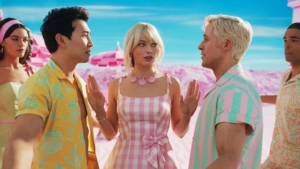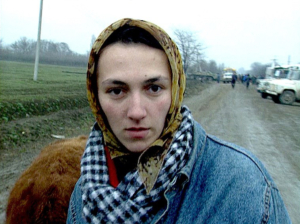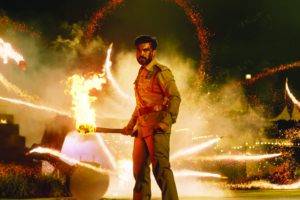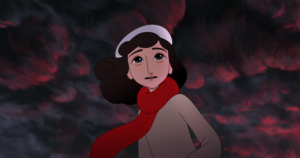As kids move into their tween years, they usually leave their early-childhood loves behind. The music of The Wiggles falls away, to be replaced by K-pop, boy bands and rap music. TV programs that once fuelled their imaginations and viewing habits are replaced by teen romances, gross-out comedies (both animated and live-action) and dramas like Stranger Things. The catchphrases and theme songs of the earlier years are filed away at the back of their brains, and the merchandise that once demonstrated their often-obsessive affection ends up at the back of the cupboard, thrown away or handed down to the next bunch of up-and-coming little kids.
Nickelodeon’s beloved animated TV series Dora the Explorer, which features six-year-old Dora and her similarly aged cousin Diego exploring the jungles around their Peruvian homes, is a great example of this. The show has spawned thousands of pieces of merchandise, from books to doona covers, lunch boxes to board games. If you are a child of the new millennium, you have probably owned a Dora- or Diego-themed item or can yell out one of the show’s many catchphrases.
The (mostly) live-action film Dora and the Lost City of Gold (James Bobin, 2019) – only ‘mostly’ because it has a number of CGI-created non-human characters – updates the Dora franchise for an audience that has outgrown the TV series. The film does something very clever: it taps into the recognition factor that tweens have for the obsessions of their earlier childhood, and extends that familiarity and storytelling beyond the boundaries of the original ‘little-kids’ TV show. The film takes Dora into both her teen years and a new culture, otherwise known as high school. By doing so, it gives its audience permission to adapt, and then carry, their earlier childhood selves (and passions, including the media they used to consume) with them as they start to move into their adolescent years. Along the way, the film also offers its audience ways of thinking about the relationship between modern and ancient cultures.

THE STORY
Re-establishing Dora’s world
In our first glimpse of the characters’ live-action world, we see a six-year-old version of Dora (Madelyn Miranda), her cousin Diego (Malachi Barton) and CGI characters Boots the Monkey (Danny Trejo), Backpack (Sasha Toro), Map (Marc Weiner) and Swiper the Fox (Benicio Del Toro) as they re-create the iconic opening from the animated series – complete with theme song.
If reproducing that well-known TV-show opening with live actors hasn’t helped us transition into this film world enough, the next shot is designed to make this switch very clear. While the series showed Dora doing things that six-year-olds could only imagine doing, the film wants to place Dora in a more age-appropriate (and slightly more realistic) mode. In this revised title sequence, little Dora and little Diego re-create their manic drive through the jungle in a functioning jeep; but as we cut to the start of this new adventure, we see them in a cardboard mock-up of a car pretending to drive.
• Why do you think the film version of Dora chooses to create a (slightly) more realistic world than the TV version?
Transitioning times
Little Dora, little Diego and Boots are playing around the house while Dora’s mum, Elena (Eva Longoria), and dad, Cole (Michael Peña), are trying to work. Dora’s parents are explorers, and their family home functions as a form of base camp. Their equipment, tools and maps are stored at home when they are not being used on expeditions out in the jungles of Peru.
But this day marks the start of a new way of life for the cousins, who have grown up together and are as close as siblings. Diego’s family is moving to Los Angeles. While Dora and Diego will still be in contact with each other, the time when they can be practically living together has come to a close.
• What do you think the effect of Diego’s move will be on him and Dora, seeing as, up to this point, they have been so close with each other?
• Young people experience a number of transitions in their lives. Can you list some of the transitions that you and your friends have already experienced?
• Looking forward, what kinds of transitions are you likely to face in the next few years? How are you feeling about these changes?
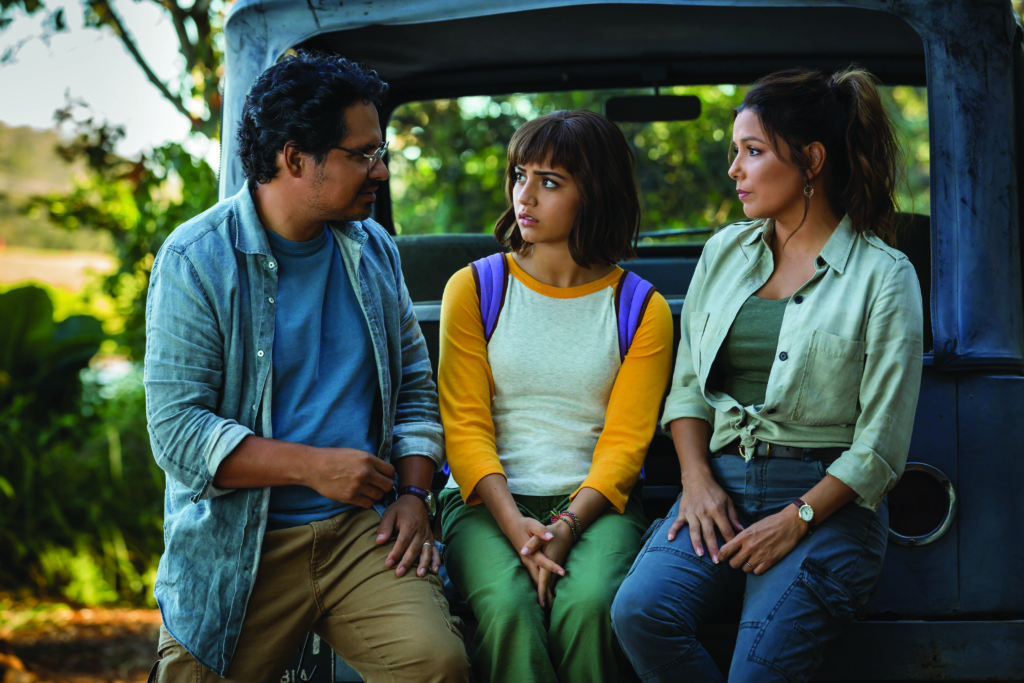
Ten years later
The film then skips forward in time. Dora (now played by Isabela Moner) is sixteen. Like many young people, she constantly films and narrates her own life before uploading the videos for an audience (the audience in this case, however, remains unseen and silent – Dora clearly doesn’t believe in reading and/or responding to the comments!). Her particular passion lies in documenting the natural environment around her, bringing the fascinating aspects of the Peruvian jungle to the wider world.
• Who do you think Dora is making her videos for? Are they for herself, or for someone else?
• What effect does Dora expect that watching one of her videos would have on a viewer? And why do you think the film avoids showing her audience participating in the story in any way?
If they find it, [Dora’s parents] don’t plan to bring the gold back with them. After all, they are explorers who seek to learn from the ancient Incan culture, not treasure hunters who want to exploit the lost city.
After one particularly long day of exploring and filmmaking, Dora arrives home to find her parents packing for their latest expedition. They are going to look for Parapata, the fabled lost Incan ‘City of Gold’. If they find it, they don’t plan to bring the gold back with them. After all, they are explorers who seek to learn from the ancient Incan culture, not treasure hunters who want to exploit the lost city by taking (and then selling) the gold for their own gain. While Elena and Cole are searching for Parapata, Dora will be going on a different expedition. She will be staying with Diego and his family in Los Angeles. While she is there, she will be starting high school.
• Does what happened to the Incan people and culture have any parallels in the history of the country you live in?
• If so, can you list some of the similarities and differences between your country’s peoples and cultures and those of modern Peru (as it is depicted in this film)?

‘A horrible nightmare’
Teen Diego (Jeff Wahlberg) is different from how Dora expected. In earlier scenes, we saw him as enthusiastic and energetic about life as she was, and he shared Dora’s passion for animals and exploration. He seemed like a happy little kid. Yet this Diego is moody, grumpy and (it seems) struggling to get by: his biggest challenge is simply making it through his education. ‘We’re all just trying to survive high school. It’s a horrible nightmare,’ he tells Dora.
Dora’s first few weeks at school are, indeed, tough. Still wearing the bright T-shirts and coloured shorts of her younger days and sporting the same iconic haircut, she finds it hard to fit in. Girls like Sammy (Madeleine Madden) consider Dora’s way of dressing, her dancing and her general sunniness to be embarrassing. Dora finds that she is ostracised, like other ‘uncool’ kids such as movie- and game-obsessed Randy (Nicholas Coombe). Even Diego comments in a disparaging manner: ‘You are way more energetic than I remember!’
• Why do you think Diego has changed so much? Is it something more than just having to go to high school?
• If Diego is having such a tough time at high school, why do Dora’s parents want her to go there as well?
Kidnapped!
Nightmare or not, school life goes on. Diego and Dora’s year level goes on a class trip to the natural-history museum. The regular exhibits bore Dora, as she’s experienced more exciting flora and fauna out in the wilds of Peru. But a sign pointing to a new Egyptian exhibit catches her eye, and she tries to move away from the main group to explore this new attraction. Her movements, though, don’t go entirely unnoticed: Diego, Sammy and Randy follow her away from the main part of the museum.
The Egyptian distraction, however, turns out to be trap. Dora and the three other teens are captured by a bunch of mercenaries. These ‘treasure hunters’ want to use Dora as bait to blackmail Cole and Elena into leading them to Parapata. Once there, the mercenaries intend to steal the lost city’s gold and other treasures. The four teens are loaded into a wooden box and airlifted all the way back to the Peruvian jungle.
• Why do you think the filmmakers have chosen characters like Sammy and Randy to go adventuring with Dora and Diego?
• What strengths do the two Los Angeles–born teens bring to the group and to their adventures?

Going deep into the jungle
On the tarmac, the teens manage to escape the mercenaries with the help of a mysterious man: Alejandro (Eugenio Derbez), who claims to be a friend of Dora’s parents and a fellow explorer. He and Dora team up and resolve to go and find her parents, relying on Dora’s tracking skills to find their way through the jungle. Diego, Sammy and Randy tag along, hoping that they will be rescued along the way.
But Alejandro is not who he purports to be. After overcoming a series of hurdles in the jungle (including having an encounter with quicksand, stumbling upon a pair of mating scorpions and solving Inca-style puzzles in ancient ruins), the group find Dora’s parents. Elena and Cole have made it all the way to the outer boundaries of the lost city. However, it turns out that Alejandro has been working for the mercenaries from the start. Dora’s parents are captured, but the teens manage to get away (with the help of Boots, who has been travelling with Cole and Elena all this time).
• What clues does the film provide early on that hint at Alejandro’s true objective?
• How does the film tell us that Diego is rediscovering joy in his life?
• How does the film suggest that Sammy and Randy are being affected by their adventures?

What do you treasure the most?
Dora and her teen team come up with a plan to release her parents. Instead of being explorers only, they will enter the lost city as treasure hunters hoping to find something that they can use to barter for Cole and Elena’s freedom. Entering the ancient city means solving another series of intricate, death-defying puzzles. All the while, Alejandro and the mercenaries (with Dora’s parents as their captives) are on their tail.
At the centre of the lost city, Dora and her companions encounter their final challenge. The Incan princess Kawillaka (Q’orianka Kilcher) and her legion of soldiers supernaturally appear in a corporeal form. The soldiers round up Dora’s team along with the mercenaries plus Cole and Elena, and it looks like some smiting may be on the cards. The princess demands to know of their true intentions. Dora replies to her in Quechua, an indigenous South American language. She pleads, ‘We are here to learn.’ The princess, pleased with this answer, invites the group to take the ultimate test: they are to take turns placing what they believe was the item most valued by the Incas into the palm of a golden Monkey God statue.
Alejandro goes first. He places a piece of gold in the statue’s palm, but his answer is incorrect. He is taken captive by the soldiers (we learn in the closing credits that he will be their prisoner for 1000 years). The other mercenaries, one by one, try, fail and are also imprisoned, before Dora steps up and places a bowl of water into the Monkey God’s palm. Water (for the Incas, as for most societies) is indeed the most valuable commodity. She has passed the test, and Princess Kawillaka will let her, her parents and her friends go.
• Is Dora being truthful to the princess when she replies, ‘We are here to learn’? Why or why not?
• Imagine you are invited to make an offering of your most valuable item. What would you choose? Give reasons for why you made this choice.
Returning to the modern world
After they are allowed to leave the lost city, Dora and her friends and parents head to her home in Peru. Because Dora has shown such excellent exploring skills, her parents offer to take her on their next expedition. But Dora has discovered a challenge that she wishes to take up independently of Elena and Cole: she wants to return to school to study the cultures of the modern world and the ‘inhabitants’ of high school. In the final scene, we see Dora, Diego, Sammy and Randy joyfully dancing at a school gathering. The four disparate characters have come together, faced a major challenge, worked together to solve the mystery at the heart of the lost city and now bonded as a tight circle of friends.
• Has Dora made the best decision in going back to school? If you were given the same type of choice, what would you decide?
• What clues does the film give us to suggest the bond between Dora, Diego, Sammy and Randy will last in the long term?
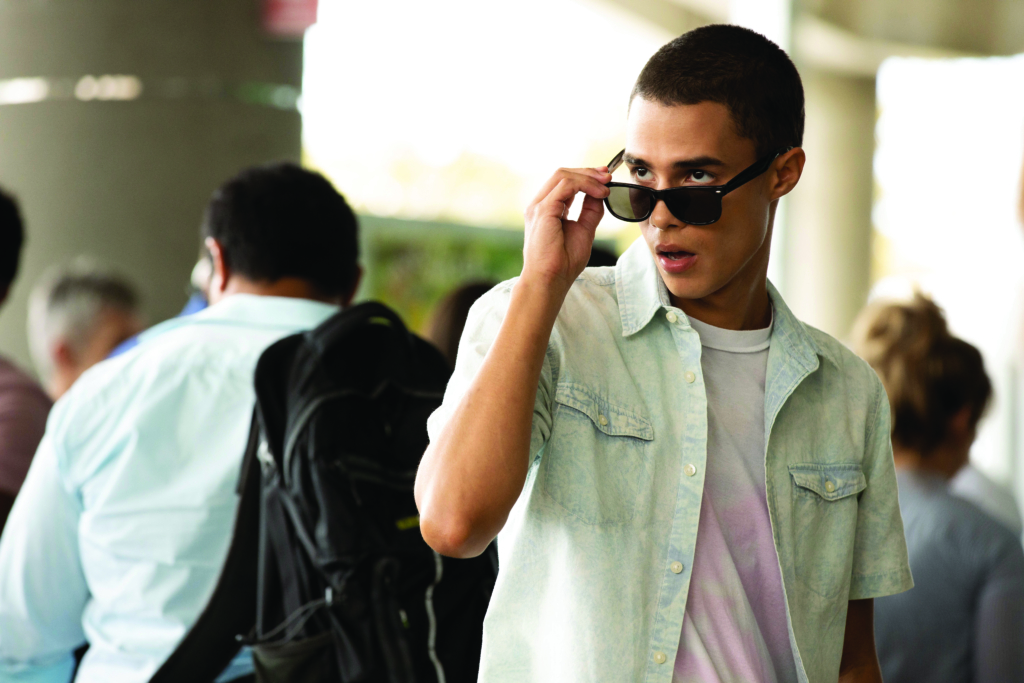
THEMES
Exploration vs exploitation
Dora and the Lost City of Gold emphasises the difference between being an explorer and being a treasure hunter. In setting up these two ways of dealing with ancient cultures, ruins and artefacts in opposition to each other, it shows a clear preference for the ‘exploration’ model. Dora’s parents are self-identified explorers who hope to find and then learn from the Incan city, whereas the mercenaries and Alejandro want to find the city and exploit it by taking all of its treasures for themselves. The encounter with Princess Kawillaka at the centre of the lost city pivots on Dora deciding, once and for all, which team she will belong to.
Dora and her friends had entered Parapata in order to find some treasure to use as barter. Even though this action was designed to save Cole and Elena from the mercenaries, it was still an exploitative act – and one that would have made Dora herself a treasure hunter. But, when the princess demands to know why Dora is in Parapata, she answers as a true explorer would: she is there to gain knowledge.
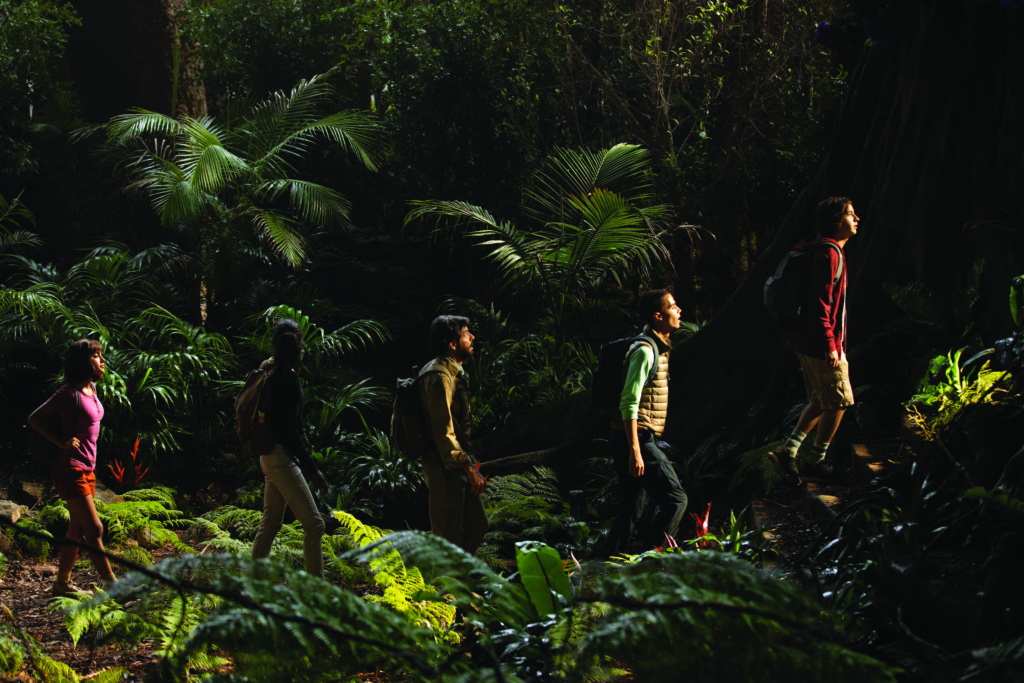
Dora, Cole and Elena, as explorers, show a great deal of respect for the knowledge and cultural artefacts of the ancient Incas. In return, the supernatural powers of the Incas allow them to leave the city. The knowledge that Dora has learnt about the Incas is what allows her to correctly answer the heart-of-the-mystery question about what the culture valued the most.
The mercenaries, on the other hand, act in a way that many modern peoples have in relation to ancient cultures. They seek to plunder and enrich themselves, exploiting (and, in the eyes of the explorers, disrespecting) the Incas. However, that very philosophy – that others exist to be exploited in order to make oneself rich – leads directly to their downfall. It is that very idea that has Alejandro believing that gold is what the Incas would value the most; after all, that is what he is there to retrieve.
• Think about the modern and ancient cultures that have existed in your country (bearing in mind that an ancient culture may still be a living culture). Does the dominant culture in your society have an explorer or a treasure-hunter style of interacting with the older culture?

Growing up is bittersweet
The other major theme in Dora and the Lost City of Gold is one that its audience are experiencing, have experienced or will experience for themselves: transitioning from childhood to teenage years. It’s not the easiest of times. Boots (who, for a brief moment, can apparently speak) sums up this child-to-teen transition when he tells Dora, ‘You’re not a kid. But you’re not a grown-up either, Dora. You’re a teenager. It’s a super-confusing time.’
We first see Dora and Diego as little kids, happy and confident in who they are and where they fit in. When we later encounter them as teenagers, they are both struggling to work out how society (in the form of high school) works and what their place in it will be. It’s a struggle that Diego initially deals with by changing his habits: he goes from being the super-enthusiastic and fun-loving six-year-old we meet living in Peru to being a withdrawn and moody teen just trying to survive.
The other major theme in Dora and the Lost City of Gold is one that its audience are experiencing, have experienced or will experience for themselves: transitioning from childhood to teenage years.
Dora, too, struggles in her first few weeks of high school. She still has some of her six-year-old habits, like making asides to an unseen audience (a feature that is often used in the TV series to engage its largely preschool audience). However, while that seemed charming in her younger years, it now comes across to others as weird. Several people – including, at different times, her dad and Sammy – notice her doing this and comment on the strangeness of the habit.

For Dora, Diego, Sammy and Randy, the adventures in the jungle allow them to do some growing up. Dora decides, at a crucial moment, whether she is truly an explorer or just another treasure hunter. Diego recognises that his natural, ebullient self gives him a degree of resilience that was lacking back in Los Angeles. Sammy acknowledges that she has a crush on Diego, sealing the deal with a kiss; in doing so, she admits to herself (and others, including a surprised, but very pleased, Diego) that she is moving into a more mature phase of her life. Randy, meanwhile, learns that his passion for movies and strategy games has real-world applications: his knowledge of pop culture helps solve some of the puzzles at Parapata, and indicate that he has a great future as a problem-solver.
• What difference does it make for the audience when Dora ages from six to sixteen? (Hint: think about different themes that can be explored and how relationships might be handled.)
• Do any of these themes reflect real-life experiences that you and your peers are facing? Does the film offer you a way to tackle some of the real-life challenges you are going through?

Audience impact
Updating a ‘little-kids’ TV show like Dora the Explorer for an older audience gives them a way to continue consuming a very popular franchise, but this doesn’t necessarily mean exploiting them. Dora and the Lost City of Gold is a sassy and bright piece of filmmaking that moves much-loved early-childhood characters into the confusing and often tumultuous high school years. It gives its audience a rollicking jungle adventure, while also asking questions such as: Am I here to learn from others, or will I be the kind of person who just takes from others? What does it mean to leave my (early) childhood life behind me? and What is my culture’s relationship to those that have been in existence for a much longer time? By the end of the film, Dora, Diego, Sammy and Randy have made the leap from having little-kid habits and behaviours to being fully fledged young adults. Their jungle adventures, and the things they learn about themselves along the way, also give their tween audience a treasure map to help them make a similar journey for themselves.

